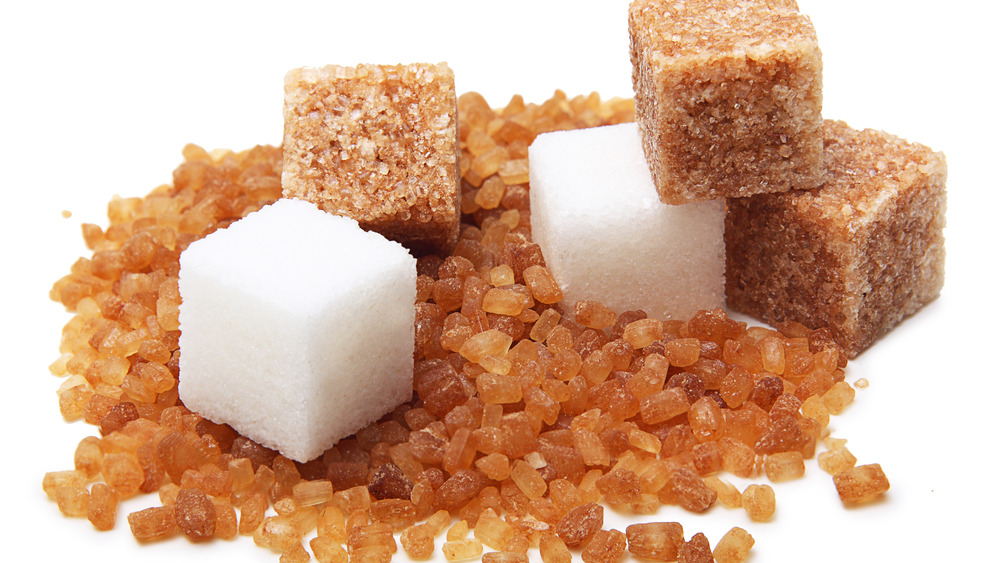A Thorough Overview to the Environmental Impact and Sustainability Practices in Walking Stick Sugar Processing
The ecological impact of walking stick sugar processing provides an intricate array of difficulties that warrant careful assessment. From soil destruction and too much water usage to the carbon impact connected with growing and production, the effects of traditional methods are far-ranging. On the other hand, the adoption of innovative sustainability procedures uses a path toward much more responsible manufacturing methods. Comprehending the interaction in between these issues is crucial for stakeholders in the market. What certain techniques can be implemented to strike a balance in between productivity and environmental stewardship? The answers hinge on a more detailed check out both the obstacles and prospective solutions.
Summary of Walking Cane Sugar Processing
Walking cane sugar handling entails a series of methodical steps that transform sugarcane right into polished sugar. At first, gathered sugarcane is transferred to processing facilities, where it undergoes cleaning up to remove soil and debris. Following this, the walking cane is crushed to extract juice, which is after that cleared up by getting rid of impurities with home heating and the enhancement of lime.
The cleared up juice goes through dissipation, where water is removed to focus the sugar material. This focused syrup is after that crystallized through air conditioning, enabling sugar crystals to develop. These crystals are separated from the staying syrup making use of centrifugation, leading to raw sugar. To attain polished sugar, the raw product undergoes further filtration processes, which may consist of filtering system and cleaning to remove remaining impurities and shade.
The final item is after that dried and packaged for distribution. Throughout this entire process, maintaining effectiveness and quality assurance is important to guarantee the sugar meets industry criteria. Each action in walking cane sugar processing not only contributes to the final item yet likewise has implications for resource use and waste generation, setting the phase for discussions on sustainability and ecological impacts related to sugar production.
Ecological Difficulties of Production
The production of walking cane sugar offers numerous considerable ecological challenges that warrant attention. One key problem is the substantial use of agrochemicals, including plant foods and chemicals, which can lead to soil degradation, biodiversity loss, and contamination of regional water resources. The drainage from sugarcane areas frequently lugs these chemicals right into close-by communities, interrupting marine life and impacting the wellness of neighborhoods reliant on these water bodies.
An additional challenge is the high power intake connected with sugarcane processing. The boiling and refining phases call for significant warm, mostly generated by melting fossil gas, contributing to greenhouse gas emissions. In addition, the large land location required for sugarcane growing can lead to deforestation and habitat destruction, additional worsening environment change and threatening wildlife.
Furthermore, the labor techniques in some regions raise moral problems, as employees may face inadequate working conditions and insufficient salaries. This scenario commonly bolsters a cycle of hardship in neighborhood neighborhoods. Cane Sugar Processing. Dealing with these environmental challenges is vital for developing a lot more lasting practices in cane sugar production, eventually profiting both the setting and the neighborhoods associated with this industry
Water and Land Use Influence
Water sources and land application are vital parts in the cane sugar market that dramatically affect the atmosphere. The growing of sugarcane needs substantial water input, with price quotes recommending that it can eat up to 2,000 liters of water per kg of sugar generated. This intensive use of water often leads to depletion of neighborhood water resources, impacting not only the sugarcane haciendas however additionally surrounding ecological communities and areas that rely upon the very same water resources for farming and residential usage.

In addition, land usage for sugarcane growing can bring about deforestation and the conversion of all-natural environments into monoculture vineyards. this article This practice lessens biodiversity, disrupts regional communities, and contributes to soil destruction. The development of sugarcane fields often encroaches on beneficial farming land, producing competitors for resources in between food and biofuel manufacturing.
Sustainable methods, such as optimizing watering strategies and applying crop rotation, are vital to alleviate these effects. By taking on more effective water usage and land management methods, the walking stick sugar sector can decrease its ecological footprint, making certain a balance between farming productivity and environmental conservation.
Greenhouse Gas Emissions
Greenhouse gas emissions stand for a substantial ecological worry within the walking stick sugar processing sector, especially as agricultural practices increase to satisfy international demand. The cultivation of sugarcane, a plant that flourishes in exotic environments, depends heavily on artificial fertilizers and chemicals, which add to laughing gas discharges. Furthermore, land-use changes, consisting of deforestation for brand-new sugarcane vineyards, release co2 stored in greenery and soil.
Throughout handling, energy intake is another significant source of greenhouse gas exhausts - Cane Sugar Processing. Lots of sugar mills utilize fossil fuels to power equipment and create heat, causing substantial carbon footprints. In addition, the transportation of raw sugarcane and completed items includes layers of emissions with fuel burning in vehicles
This entails reviewing existing agricultural methods, processing techniques, and transport systems to determine locations for enhancement and mitigation. Attending to greenhouse gas exhausts is important for fostering a more lasting walking cane sugar sector in an altering environment.

Lasting Practices and Innovations
Sustainable methods and advancements are increasingly important in the walking cane sugar handling sector as stakeholders look for to lower ecological impacts while preserving performance. One substantial innovation is the implementation of integrated plant monitoring, which optimizes resource use by integrating soil administration, pest control, and plant rotation methods. This technique enhances return while reducing chemical inputs and preserving dirt health.
In addition, the adoption of renewable resource resources, such as biomass from sugarcane residues, has actually acquired traction - Cane Sugar Processing. By transforming waste items into power, refining facilities can decrease their reliance on nonrenewable fuel sources, therefore reducing greenhouse gas exhausts
Water monitoring practices have additionally seen improvements via the recycling and reusing of water in processing plants, considerably decreasing freshwater consumption. Innovations in technology, such as precision agriculture, allow farmers to keep track of crop health and resource use more properly, making certain lasting growing techniques.
Moreover, certification programs like Fair Trade and Rainforest Partnership encourage environmentally responsible farming techniques additional reading and promote social equity within the supply chain. By embracing these sustainable methods and developments, the walking cane sugar handling sector can boost its strength and contribute positively to environmental stewardship.
Conclusion
The environmental impact of cane sugar processing provides substantial challenges, consisting of dirt destruction, high water consumption, and greenhouse gas discharges, alongside moral issues connected to labor techniques. Dealing with these problems via sustainable check that practices, such as integrated plant management, renewable energy adoption, and water recycling, is crucial. By advertising ecologically liable and socially equitable techniques in sugar manufacturing, the industry can alleviate its damaging effects, making certain a much more sustainable future for both environments and neighborhoods associated with this field.
Walking cane sugar processing involves a collection of organized steps that change sugarcane right into polished sugar. Each action in cane sugar handling not just adds to the final product yet additionally has implications for resource usage and waste generation, establishing the stage for discussions on sustainability and ecological effects associated with sugar manufacturing.
Greenhouse gas exhausts represent a substantial ecological problem within the walking cane sugar processing industry, particularly as farming practices expand to satisfy global demand.Sustainable practices and innovations are progressively crucial in the cane sugar handling industry as stakeholders seek to decrease ecological effects while preserving productivity.The ecological effect of walking cane sugar processing offers substantial difficulties, including dirt deterioration, high water consumption, and greenhouse gas discharges, along with honest issues connected to labor practices.
Comments on “Cane Sugar Processing: From Field to Table-- A Step-by-Step Guide”